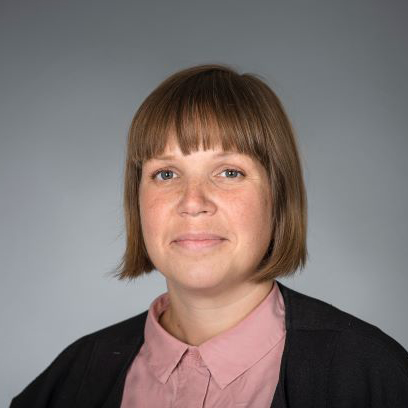Introducing MIMS-EMBL Group Leaders: Ellen Bushell - Parasite-host interactions that govern malaria infection and disease
Dr Bushell, who is originally from Umeå, joined MIMS as a group leader from the Wellcome Sanger Institute near Cambridge in Autumn of 2018

Can you tell me a bit more about your background?
I did my undergraduate degree at Cardiff and then my Master’s and PhD at Imperial College, London. I also did a short postdoc at Imperial, with some field work in West Africa before moving on to the Wellcome Sanger Institute. There, I was a senior staff scientist working as the project manager for PlasmoGEM; a project that generates and freely distributes tools for the genetic manipulation of the Plasmodium malaria parasites.
I’ve now returned home to Umeå after 19 years studying and working abroad.
Can you tell me a bit more about your research?
I work on malaria using a rodent model parasite, for which we have been able to scale up genetic manipulation to conduct genetic screens. Malarial disease is caused when the malaria parasite invades and grows within red blood cells. The progression for any one malaria infection is wholly determined by the interaction between the parasite and its host. If two persons become infected with the same parasite, the outcome in terms of disease severity will be differnt due to how the parasite interacts with for example the individual’s immune response. My main research interest is in these parasite-host interactions.
Our rodent model parasite means we can conduct malaria in vivo studies. This is important as, for the human malaria parasite, there are currently no non-primate models, making it very difficult to do in vivostudies. Our mouse model therefore allows us to study these meaningful interactions in vivo. We’re hoping to uncover a map of the role of exported proteins in parasite-host interactions and determine how these interactions shape the outcome in terms of the disease.
Do you work with anyone outside MIMS, or within MIMS?
I use the same research model and similar techniques to that of MIMS Director, Oliver Billker. Although our research is quite different, we do collaborate closely.
In terms of the other nodes, I would certainly be really interested in developing some research collaborations; particularly in terms of techniques. I’m already working with some other group leaders and researchers at Umeå but I would like to expand these to include other researchers within the Nordic EMBL nodes. There is a lot of expertise in imaging and structure-function biology within the Partnership, which is really relevant for my research.
What got you interested in malaria research?
During my masters at Imperial I rotated across some groups, and had the fortune to end up in Professor Robert Sinden’s lab- a very senior malaria researcher. He showed me some malaria parasites in the midgut of a mosquito under the microscope and from then on I was hooked.
What would you like to achieve in your first phase as group leader?
Scientifically, the screens we have set up for characterising exported proteins at scale are now in place, so we’re looking to roll these out. Over the next two/three years we will primarily invest in these screens and then do work to identify a strong cohort of candidate proteins that will be taken forward for deeper studies to delineate their role in determining host-parasite interactions. That will be our broader goal in terms of science. I’m of course then also looking to establish myself as an independent group leader, transitioning to final authorship for the publicationsthe screens we’re working are expected to yield , and of course I hope to bring in independent funding.
For more information, visit the Bushell Group webpage.